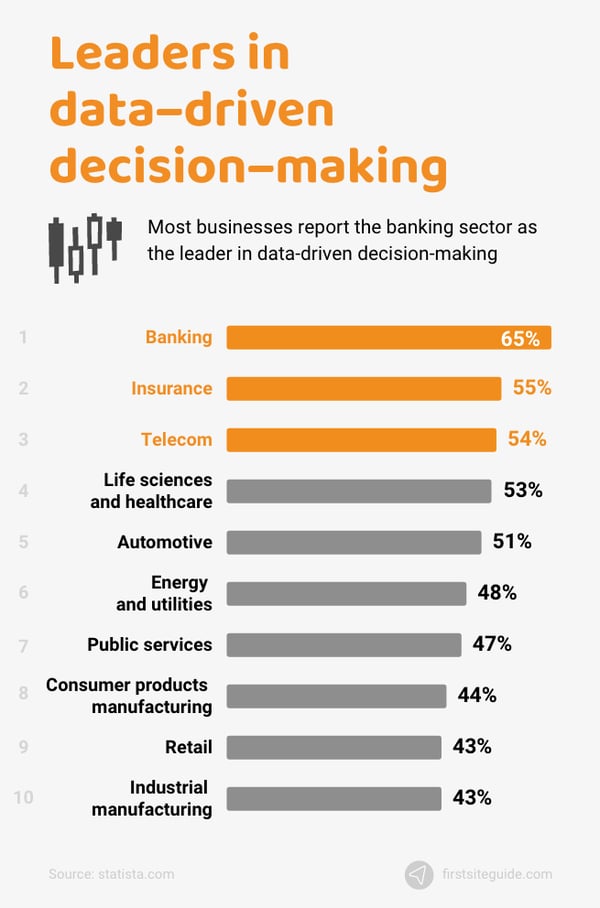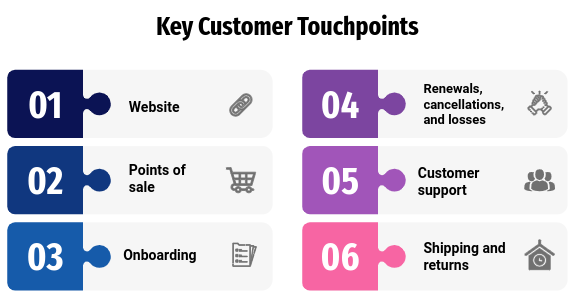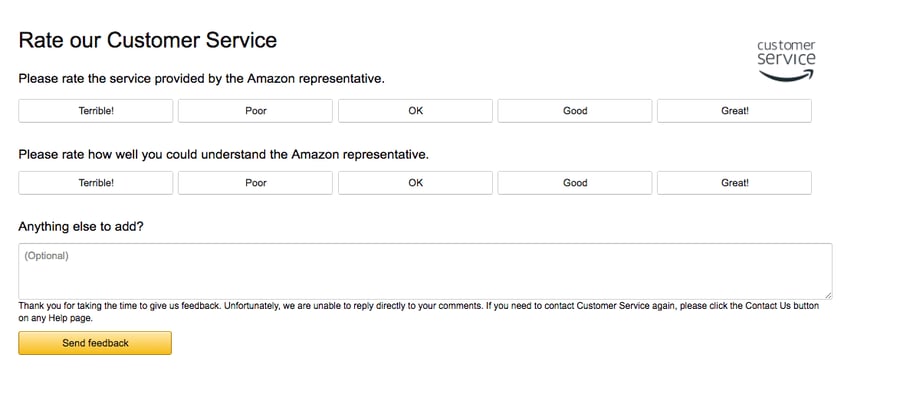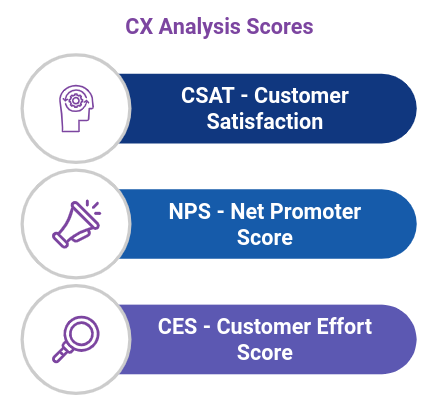
A fantastic customer experience can make or break a brand. No matter how amazing your product is or whether you’re offering lower prices than your competitors, a great customer experience often keeps customers coming back.
A key part of providing an industry-leading customer experience is the ability to measure it. That’s where customer experience analysis, or CX analysis, comes in. In this short but efficient guide, we’ll cover everything you need to know about CX analysis, including some essential steps for conducting it yourself.
What is Customer Experience Analysis?
CX analysis is the process of collecting, analyzing, and presenting customer data to measure the effectiveness of current CX tools usage and to discover how customers are experiencing your brand, product, and service.
The best CX analyses offer valuable insight into your customer journey, from their first interaction with you to their post-purchase experience. They can identify any problems or pain points and provide metrics that you can analyze over time.
Why is Customer Experience Analysis Important?
With customer experience becoming even more essential to the success of a brand, customer experience analysis is more important than ever. By performing CX analysis, you can ensure that you make smart, data-driven decisions rather than designing your CX processes blindly.

Source: First Site Guide
With CX analysis, you can:
Make data-driven decisions
Data is a valuable resource for a range of industries, especially those that want to improve their customer experience. This is true even if you’re in eCommerce rather than the big data industries like banking and insurance. You’re still a part of the growing popularity of data as a means to make decisions across your business. Data can help you make smart decisions related to marketing, web design, customer service, products and services, and, of course, customer experience.
Streamline your CX processes
With customer data at your fingertips, you can figure out where you can streamline, reduce, or increase your CX processes. If customers are being bounced from department to department when they call your helpline, it’s time to consider an automated receptionist. If your social media campaigns aren’t landing, it’s time to reorient them toward your target audience.
Identify problems
Whether done through feedback surveys or spot checks with your CX team, CX analysis can help you spot problems. Are customers complaining about low-quality sound when calling your helplines? This info might make you consider a new phone service like a hosted private branch exchange. Are customers rating your online shopping experience low? It’s time to bring in a web developer and improve the quality of your website.
How to Conduct CX analysis in 4 Steps
1. Identify your target customer.
The ideal customer profile is essential to any business plan. You may have created one when you first set up your business. But when did you last look at it? And have you used it in your customer experience analysis?
What is an ideal customer profile? If you need a refresher, your ideal customer profile or ideal buyer profile is a fictional person or company that would benefit the most or be the most likely to buy your product or service. For people, you might consider demographics like age and gender, or for companies, you might include their sector and the number of employees.
If you don’t have an ideal customer profile and are unsure who your target audience is, it’s time to collect more customer data. Including a survey on your website for buyers post-purchase that asks for demographic information will give you a quick insight into who is buying your products.
2. Locate and review customer touchpoints.
The next step for performing CX analysis is locating your key customer touchpoints.

These are located in various stages of your customer journey where the customer interacts directly with your business. Typical customer touchpoints include:
- Website: What do first-time visitors and loyal customers see when they open your website? Is the landing page well designed with a clear brand identity?
- Points of Sale: What happens at checkout and post-purchase? Is the point of sale and checkout process easy? Do you offer a wide range of payment options? What communications do customers receive from you after making a purchase?
- Onboarding: If your business offers a service such as software or a subscription, what is the onboarding experience like for new customers? Is it clear and easy to follow? Do you provide a comprehensive guide to help customers get the most out of your service?
- Renewals, Cancellations, and Losses: When considering renewing or canceling a service, what experience do you offer your customers? How do you convince them to stay, and what do you do if you lose a customer?
- Support: If a customer calls you asking for tech support or day-to-day questions like how to forward a landline to a cell phone, what is their experience with your support team? Do you follow up all interactions with an email or survey?
- Shipment and Returns: What is the shipment process like for your customers? What communications do they receive? And what happens when they need to return a product? Is the process easy to use? Do you have systems in place for international customers?
These are some of the key customer touchpoints to consider when analyzing your customer experience. Collectively, they provide an in-depth insight into the service you provide. By reviewing each in detail, you can ensure you offer consistent service across all touchpoints and that there are no pain points that could prevent a customer from using your service again.
3. Use customer feedback surveys.
Reviewing your customer touchpoints yourself is a good start and provides an important base to build upon. But you’ll get the best insight into your customer experience by asking your customers directly. To do this, you’ll need customer feedback surveys.

Source: HubSpot
There are plenty of ways you can integrate feedback surveys into your website, customer support lines, or retail management systems. The best place to put a customer feedback survey is at a critical customer touchpoint. Immediately after checkout, present a short feedback survey asking customers to rate their checkout experience. Send customers a satisfaction survey via text after interacting with your customer service or support team.
Keep your surveys short and sweet so customers will be more willing to complete them. Think carefully about the questions you want to ask to collect the data you need and place a link in the email for easy access. A way to encourage customers to complete your survey is to offer a small discount on their next purchase or free shipping.
Feedback surveys are essential to performing a customer experience analysis. They can offer you lots of key metrics to measure customer experience at different touchpoints and over time. In addition to this, you can leverage customer testimonials to boost sales. Include reviews from surveys on your website as social proof of your product and service quality.
4. Calculate your CSAT, NPS, and CES scores.
Now that you’ve collected some data, it’s time to convert it into more understandable scores for you, your customers, your staff, and your shareholders. You can tell everyone that over 90% of your customers are satisfied with your service. However, there are some specific scores used across different industries that can be quickly understood in professional settings: CSAT, NPS, and CES scores.

So what do all of these acronyms mean? Here’s a breakdown:
Customer Satisfaction Score (CSAT)
A CSAT score does what it says on the tin — it measures customer satisfaction. It’s useful to collect CSAT scores for multiple touchpoints to see where you’re succeeding and where you’re missing out on opportunities to create satisfied customers.
To collect these scores, present customers with feedback surveys that ask, “How satisfied are you with your experience today?” on a scale of 1-5 or 1-10, with 5 or 10 being “very satisfied” and 1 being “not satisfied at all.”
To calculate your CSAT scores, divide the total number of customers who gave a positive rating, such as a 9 or 10 on a scale of 1-10, by the total number of responses to the survey and then multiply this by 100. CSAT scores are between 1 and 100 — the higher your score, the better your CSAT is.
Net Promoter Score (NPS)
Your NPS measures your customers’ loyalty — specifically, how likely they are to promote your brand by recommending it to friends, family, and colleagues. This helps you measure customer loyalty and predict future growth.
You can collect data for your NPS by asking customers in feedback surveys to rate how likely they are to recommend your product or service on a scale of 1 to 10. Customers are split into three categories based on how they respond: Promoters (9-10), Passives (7-8), and Detractors (0-6).
Calculate the percentage of promoters and the percentage of detractors and subtract the detractors from the promoters. This will give you an NPS between -100 and 100 — the higher your score, the better.
Customer Effort Score (CES)
CES is a measure of how much effort a customer has to put in to complete a task, such as purchasing a product, signing up for a free trial, or getting help via customer support.
Customers don’t want to spend too long trying to solve a problem or go through lots of steps to make a simple purchase or information request. CES is so important to customer experience that it can impact your sales.
CES can be calculated using customer feedback surveys. Just as the above surveys asked about satisfaction and likelihood to recommend, CES surveys ask customers to rate how easy their experience was. For example, after using a knowledge base or contacting support, customers may be asked to rate how easy it was to get the help they needed on a scale of 1 to 5 or 1 to 10.
Unlike NPS and CSAT scores, there isn’t a widely used measurement or scoring system for CES. But you can calculate it in the same way as CSAT scores to give different touchpoints a CES out of 100.
Final Thoughts
Customer experience is a vital part of running a business. Whether you run a software company or an online clothes store, ensuring you provide an excellent customer experience is as important as your service or product quality. It’s what can set you apart from your competitors.
The key to customer experience is data, which you can collect directly from your customers and analyze yourself to perform CX analysis. With the right surveys and tools at your fingertips, you can quickly transform your CX.





Leave a reply or comment below